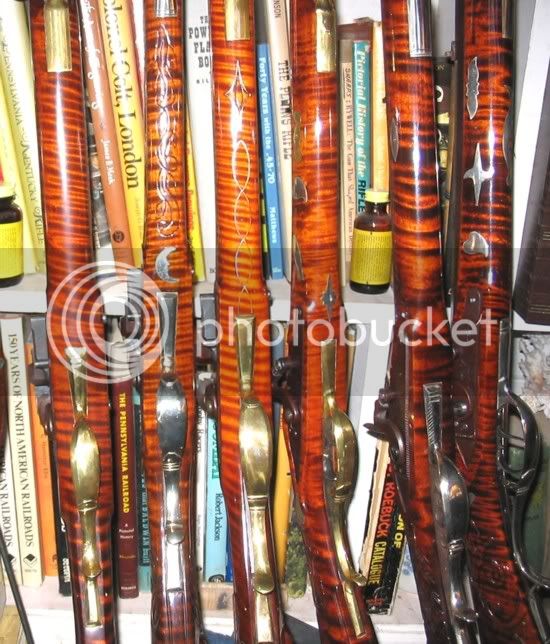Still waters run deep, and though I have not been active in the forum I have been in the shop with tiny chips and metal flying about and making progress. With that said here is a question related to stock stain and finish...
I searched around in the forum for stock and staining proceedures but got everthing from too many threads with unrelated content to "sorry, nothing found"
If there is a thread already created which answers my question then I'm all ears!, please point me there...
If not...
For those that do not know my kit is a 1770 Early Lancaster M3 Curly Maple stock.
This stock has some pretty sweet curls in it and I know what I want in a stock stain/finish, But how does one describe a stock stain or finish in order to get some pointers and resources to achieve those results.
Sure I can look in a ML catalog for stock stains but I don't know what the result will be from the stain.
The best I can come up with is to look around on the internet and snag some photo examples.
Take a look at the examples that I'd like for the finished product to look like and kindly give me an idea of the process, proceedure, supplier to achieve that look.


Thanks
rootnuke
I searched around in the forum for stock and staining proceedures but got everthing from too many threads with unrelated content to "sorry, nothing found"
If there is a thread already created which answers my question then I'm all ears!, please point me there...
If not...
For those that do not know my kit is a 1770 Early Lancaster M3 Curly Maple stock.
This stock has some pretty sweet curls in it and I know what I want in a stock stain/finish, But how does one describe a stock stain or finish in order to get some pointers and resources to achieve those results.
Sure I can look in a ML catalog for stock stains but I don't know what the result will be from the stain.
The best I can come up with is to look around on the internet and snag some photo examples.
Take a look at the examples that I'd like for the finished product to look like and kindly give me an idea of the process, proceedure, supplier to achieve that look.


Thanks
rootnuke


































